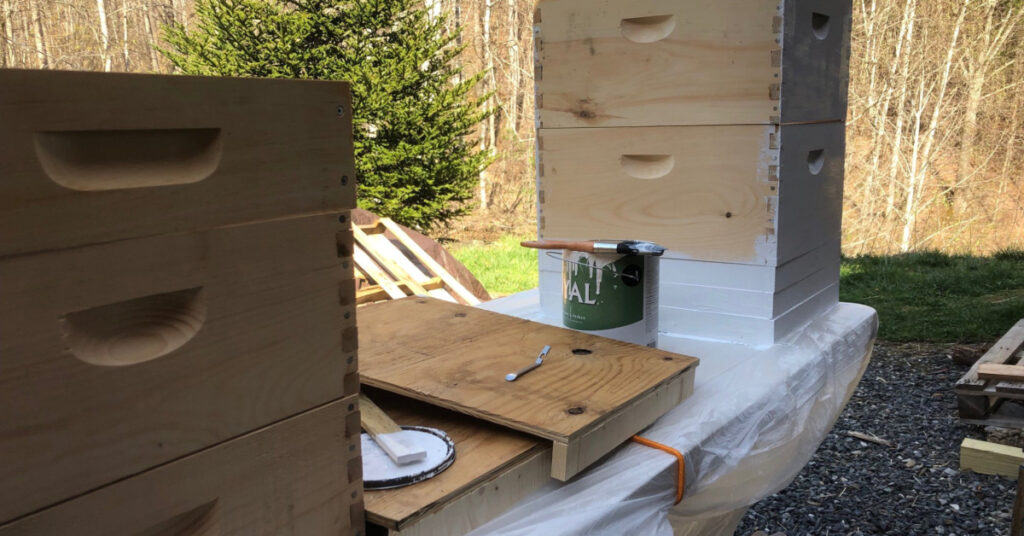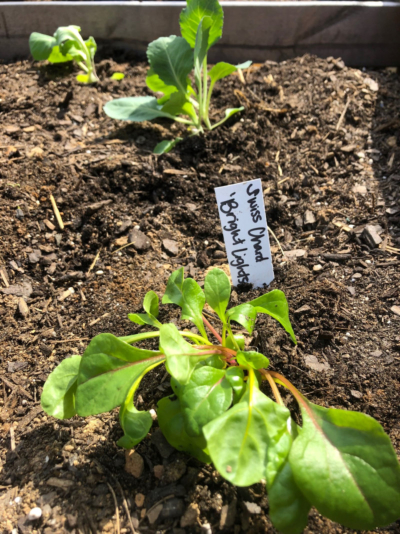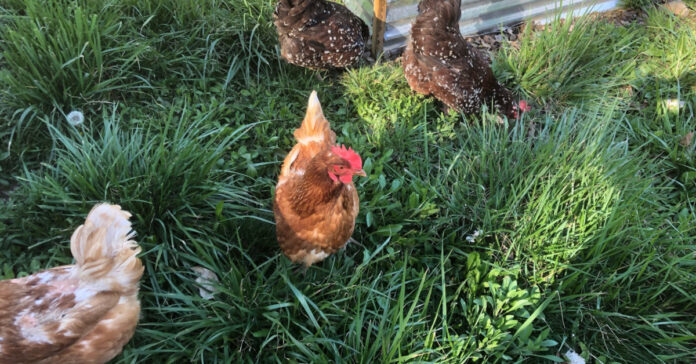Last week was our first week of warm weather that was not interrupted by snow or freezing temperatures. That allowed me to do a mess of homesteading chores, all of which will help us be more self-sufficient.
I’ve written about setting up my new beehives and the chicken butchering, but over the past 10 days, I also:
- Transplanted cabbage starts into the garden
- Transplanted Swiss chard starts into the garden
- Stacked more firewood
- Added 3 cases of canned cat foot to our preps
- Added two cans of vegetables and three cans of roast beef to our prepper pantry
- Bought three bags of chicken feed and one bag of chick feed
- Bought a small chicken-egg incubator, just in case
- Built four new beehive components and painted 14 different pieces of bee equipment
- Made arrangements to pick up another nucleus hive tomorrow
- Fed the bees
- Had our annual chimney inspection and sweep
- Went for a walk in the woods with my wife and identified edible plants

None of these by themselves is much, but taken together, it is measurable forward progress. (I can promise you, it’s more than I did the week before.) That’s what I like to see: some progress every few weeks. I don’t want to rest on my laurels for too long, although there are times when life interferes and prepping is the furthest thing from my mind. This is why I believe that prepping should be a lifestyle, not just something you do when it looks like all hell is going to break loose. We don’t want to be the folks who run out for plywood and a generator the day before the hurricane is due.
Building vs. Sustaining
I am sure there are people out there who are relatively late-comers to prepping. If so, they probably needed to invest a significant amount of money to become prepared in a hurry.
I visited my favorite long-term survival foods website and put together a decent one-year supply of food for two people for $3,640 (not counting shipping). If I were unprepared and was bitten by the prepper bug, I would place that order. Add in some canned foods, standard grocery store fare, water filters, buckets, flashlights, lantern, cookstove, and other prepping supplies and you’re looking at $5,000 easy. If you need guns and ammo plus gear and accessories for two, you could spend anywhere from $2,5000 to $5,000 more. Call $10,000 for a couple to have the prepping basics covered, including a year’s worth of food.

If, on the other hand, you had started prepping five years ago, you could have spent $2,000 a year, and you’d be in better shape. When there is no rush to prep, you can take advantage of sales and promotions. You might also have been lucky enough to buy your ammunition during the early Trump years when prices were less than half of what people pay today.
I know I would rather spend $150 to $200 a month to enhance and expand my preps than $10,000 at one time. Of course, if you are just starting to prep, you should evaluate how long you think we have before you need your preps and act accordingly. With inflation raising prices every few weeks, spending $10,000 today may beat spending $15,000 in six months or $30,000 over three years for the same amount of food and supplies.
One Step at a Time
Once you are comfortable with your level of preparedness, don’t pause your prepping. Instead, use your budget to tackle bigger projects that go beyond food, water, self-defense and medicine. For example, if you want night vision, that may require saving for the better part of a year. If a four-wheel-drive SUV or pickup truck for your bugout vehicle is on your list, you may have to save for longer. If you want to move out of the city, that takes both money and extensive planning. But if you give yourself a five-year window, even big steps become achievable. If you don’t have five years, then you’d better have some serious financial resources.
One advantage of prepping one step at a time is that you can keep a list of things you need. That way, when you see that dehydrator at a yard sale, you can make a cash offer. When Walmart has spaghetti sauce on sale for 88 cents a jar, you can snap up two cases. When the flashlight company sends you a 20 percent off coupon via email, you can buy your spouse one sand save it for a Christmas present.
Feeding the Chickens
We’ve been feeding the chickens an increasing number of kitchen scraps. As food gets more expensive, we want to get some benefit from the things that we don’t consume, and feeding leftovers to the chickens should lower their consumption of chicken feed. For example, we had three beets that got mushy, so my wife tossed them into the chicken run. The chickens looked at the beets for a moment, but then ignored them. I expected they would at least peck at them.
The next day, the big round balls were still there in the run, so I grabbed my machete and chopped each beet into at least four pieces. The hens showed no interest. I thought chickens would eat almost anything, but maybe they don’t like beets? When I came back late that afternoon, I noticed they had consumed every bit of the beets except for some skin. I guess they liked the beets after all. We just need to cut them open.
On different days, the chickens got some leftover turkey scraps, carrot scrapings, and the outside leaves from a head of cabbage. I let them free range one day under my supervision and on other days tossed them plenty of clover, grass, and various weeds. It’s a hoot to watch one chicken run away with a choice morsel and try to eat it without the others noticing.
We’re going to continue to expand our chicken’s intake of foods other than commercial feeds while monitoring their egg output. It will be interesting to see if they can continue to be strong layers while eating more wild foods.







